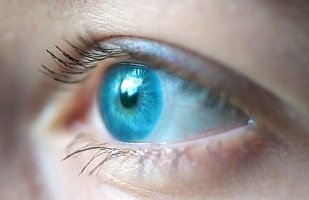
Researchers at University of Sheffield use microstereolithography and electrospinning to graft stem cells into blind person's eye
Singapore: A team of engineers at the University of Sheffield have developed a new method for producing membranes that can help in grafting stem cells onto the eye by mimicking structural features of the eye itself. The study has been published in the journal Acta Biomaterialia.
Using a combination of techniques known as microstereolithography and electrospinning, the researchers are able to make a disc of biodegradable material which can be fixed over the cornea. The disc is loaded with stem cells which then multiply, allowing the body to heal the eye naturally. The technology has been designed to treat damage to the cornea, the layer on the front of the eye that can be transplanted.
Dr Ãlida Ortega Asencio, EPSRC fellow, faculty of engineering, University of Sheffield, said that, "The material across the center of the disc is thinner than the ring, so it will biodegrade more quickly allowing the stem cells to proliferate across the surface of the eye to repair the cornea."
A key feature of the disc is that it contains niches or pockets to house and protect the stem cells, mirroring niches found around the rim of a healthy cornea. Standard treatments for corneal blindness are corneal transplants or grafting stem cells onto the eye using donor human amniotic membrane as a temporary carrier to deliver these cells to the eye. For some patients, the treatment can fail after a few years as the repaired eyes do not retain these stem cells, which are required to carry out on-going repair of the cornea.
Without the constant repair, thick white scar tissue forms across the cornea causing partial or complete sight loss. The researchers have designed the small pockets they have built into the membrane to help cells to group together and act as a useful reservoir of daughter cells so that a healthy population of stem cells can be retained in the eye.
Professor Sheila MacNeil, University of Sheffield, said that, "Laboratory tests have shown that the membranes will support cell growth, so the next stage is to trial this in patients in India, working with our colleagues in the LV Prasad Eye Institute in Hyderabad. One advantage of our design is that we have made the disc from materials already in use as biodegradable sutures in the eye so we know they won't cause a problem in the body. This means that, subject to the necessary safety studies and approval from Indian regulatory authorities, we should be able to move to early stage clinical trials fairly quickly."
Treating corneal blindness is a particularly pressing problem in the developing world, where there are high instances of chemical or accidental damage to the eye but complex treatments such as transplants or amniotic membrane grafts are not available to a large part of the population.
The research is supported by a Wellcome Trust Affordable Healthcare for India Award to the University of Sheffield and the LV Prasad Eye Institute, where the work is led by associate director and head of clinical research, Dr Virender Sangwan. The work has also been supported through a research fellowship for Dr Ortega from the Engineering and Physical Sciences Research Council (EPSRC).




